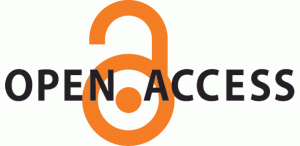
Paywalls have become the scourge of this intrepid desk-chair policy officer, and I sometimes find myself reminiscing about my former university libraries with their vast range of journal subscriptions and inter-library loans, which together made paywalls seemingly non-existent.
Publishing, and reading, peer-reviewed research currently forms the basis of scientific progress and research careers. Technological advances mean we have access to more information than ever before; and yet, many research outputs are still often stuck behind paywalls, privileging access to paying subscribers alone. For a few of the larger, commercial publishers, the traditional subscription model, where access to content is paid on a per-article or annual, often institution-wide basis has been extremely lucrative, and it has also served smaller, and learned society publishers.
The publishing landscape is changing, however, with a push towards research outputs that are more accessible for everyone, rather than only those with the means of paying for articles or subscriptions.
Why change the system?
 The reasons behind these changes are manifold and complex. Often discussed is that much research is publicly funded from taxes via research funders (such as UK Research and Innovation/UKRI in the UK) or from research charities[1]. And if research is funded by the public, shouldn’t the public be able to access its outputs?
The reasons behind these changes are manifold and complex. Often discussed is that much research is publicly funded from taxes via research funders (such as UK Research and Innovation/UKRI in the UK) or from research charities[1]. And if research is funded by the public, shouldn’t the public be able to access its outputs?
A second, fundamental reason to shift towards more accessible publishing, is that increased accessibility to published research findings will improve research. Sharing of research and collaboration is fundamental to scientific progress, and this is largely done through publishing research in peer-reviewed journals, so widening the access to published work will drive further innovations faster. As well as enabling the final published article to be accessed, researchers are increasingly being encouraged to share the underlying data via repositories – either subject-specific repositories like GenBank or general ones such as Figshare. Ultimately, these practices could lead to increased quality of science, efficiency, collaboration and all-round research integrity, and hopefully help address the so-called “reproducibility crisis” in the biological sciences.
Frankly, this movement towards more transparent research practices [generally termed open science or open scholarship (OS)], sounds pretty sensible to me, and it taps into the broader questions of who, and what, is scientific research for, and how should this research be communicated. Large swathes of the research community agree with the aims of OS, at least in principle, and a shift towards it is already happening. An increasing number of research articles are available via open access, (where the author retains the copyright and reading is free at point of use), either through publication in fully open-access and hybrid journals or via deposit of the manuscript in institutional repositories. It’s clear academic publishing is moving in this direction.
The publishing industry was given the shock treatment last year when a group of major European funding bodies, collectively known as cOAlition S, (the OA for open access and the S for science, speed or shock depending on your point of view) decided that, from 1 January 2020[2], all research outputs from their funding must be published in OA journals to assure “full and immediate” access to published research. This initiative, known as Plan S, aims to accelerate the transition towards OA, and it will certainly catalyse change in the industry. More funders, including some based outside of Europe such as the National Science and Technology Council of Zambia, have since joined cOAlition S.
What does this mean for publishing that paper?
 There are several existing routes to OA, the most common being publishing your article through the ‘Gold’ route and archiving, often called ‘Green’ OA[3]. In many cases, in order to use the Gold route and publish OA, the journal charges the author an ’article publishing charge‘ (APC). This APC model predates Plan S, but as its implementation makes OA publishing more widespread, new models will be needed to overcome some of the concerns associated with APCs. In particular, the APC model shifts the costs of publishing from institutions to individual researchers, and may therefore bias against financially restricted authors. There have been calls for funding bodies to mitigate this by providing funding designated towards APCs. Although this support has been previously available through some funding streams, this provision may need to be increased as more authors seek to publish OA via this route. In addition, this APC model may present a greater challenge in countries where national funding bodies do not require OA publishing, and funding for APCs may therefore be harder to justify.
There are several existing routes to OA, the most common being publishing your article through the ‘Gold’ route and archiving, often called ‘Green’ OA[3]. In many cases, in order to use the Gold route and publish OA, the journal charges the author an ’article publishing charge‘ (APC). This APC model predates Plan S, but as its implementation makes OA publishing more widespread, new models will be needed to overcome some of the concerns associated with APCs. In particular, the APC model shifts the costs of publishing from institutions to individual researchers, and may therefore bias against financially restricted authors. There have been calls for funding bodies to mitigate this by providing funding designated towards APCs. Although this support has been previously available through some funding streams, this provision may need to be increased as more authors seek to publish OA via this route. In addition, this APC model may present a greater challenge in countries where national funding bodies do not require OA publishing, and funding for APCs may therefore be harder to justify.
Indeed, one of the major criticisms of Plan S has been Eurocentric focus, and fears that it may shut out researchers from some of the most prestigious journals, such as Nature and Science, which are not currently Plan S compliant. The reverse is also true; will APC charges result in researchers not funded by cOAlition S partners being unable to publish in journals which have chosen to comply. Without buy-in from other large research (and publishing) players such as the US[4] and China, there is a limit to what a European-based OA movement can achieve.
Institutions themselves have a role to play, as they often hold the purse-strings when it comes to paying for journal subscriptions. By modifying institutional spend on subscriptions to include both content access and OA publishing for its researchers, institutions and publishers could work together to aid this transition. The OA2020 initiative consists of institutions looking to do just this, supporting full OA publishing by re-wiring subscription licenses. Of course, this can involve merging different library budgets (previously allotted separately to subscriptions and OA publishing), as well as improving reporting systems to keep track of both reading and publishing activities of researchers, on an institution-wide basis. However, the commitment of both publishers and institutions is needed to help develop more APC-free routes.
For the Learned Society sector, whose charitable activities often depend on income generated from publishing, there are again concerns. For example, in responding to consultation on the initial implementation guidelines from cOAlition S, the Society Publishers’ Coalition (SocPC) expressed concern surrounding the timeframe of transitioning to OA and the ruling out of hybrid journals, where both OA (via an APC) and subscription model articles are published within the same journal. Following this consultation period, the implementation guidelines have extended the date to January 2021 and have allowed other payment models – a welcome sign that there is active, and constructive, dialogue across the community.
With so many details to be ironed out, both on the side of funders and publishers, it is certainly an interesting time in the quest for a more open, accessible research environment. Publishers will be coming up with innovative ways of transitioning to OA models quickly, while maintaining their goal of the dissemination of quality scientific research and without leaving individual researchers behind. Ultimately, the changing publishing landscape will enable a move towards more open, accessible and transparent research practices which can only improve science. Watch this space…
[1] According to the Association of Medical Research Charities, their member charities were collectively responsible for 41% of all publicly funded medical research in the UK in 2018,
[2] Following a consultation period on the Implementation Guidelines of Plan S, with various industry stakeholders, this deadline has been moved to 2021.
[3] Gold = the final, published article is available without a paywall and under a reusable license on the publisher’s site.
Green = a version of the manuscript is available by depositing it in a relevant repository.
[4] There are increasing signs that the US industry is also heading towards more OA publishing of research. For example, the state of California recently ruled that any state-published research must be available OA.
By Hannah Macdonald
Policy and Public Affairs Officer
Biochemical Society


Greate pieces. Keep posting such kind of information on your site.
Im really impressed by it.
Hello there, You’ve performed an excellent job. I’ll certainly digg it and for my part recommend
to my friends. I’m confident they will be benefited from this
web site.
LikeLike